[Editor’s note: The following essay is adapted from a chapter of the book by Evan J. David, Our Coast Guard: High Adventures with Watchers of Our Shores (New York: D. Appleton-Century Company, 1942), 209-233.]
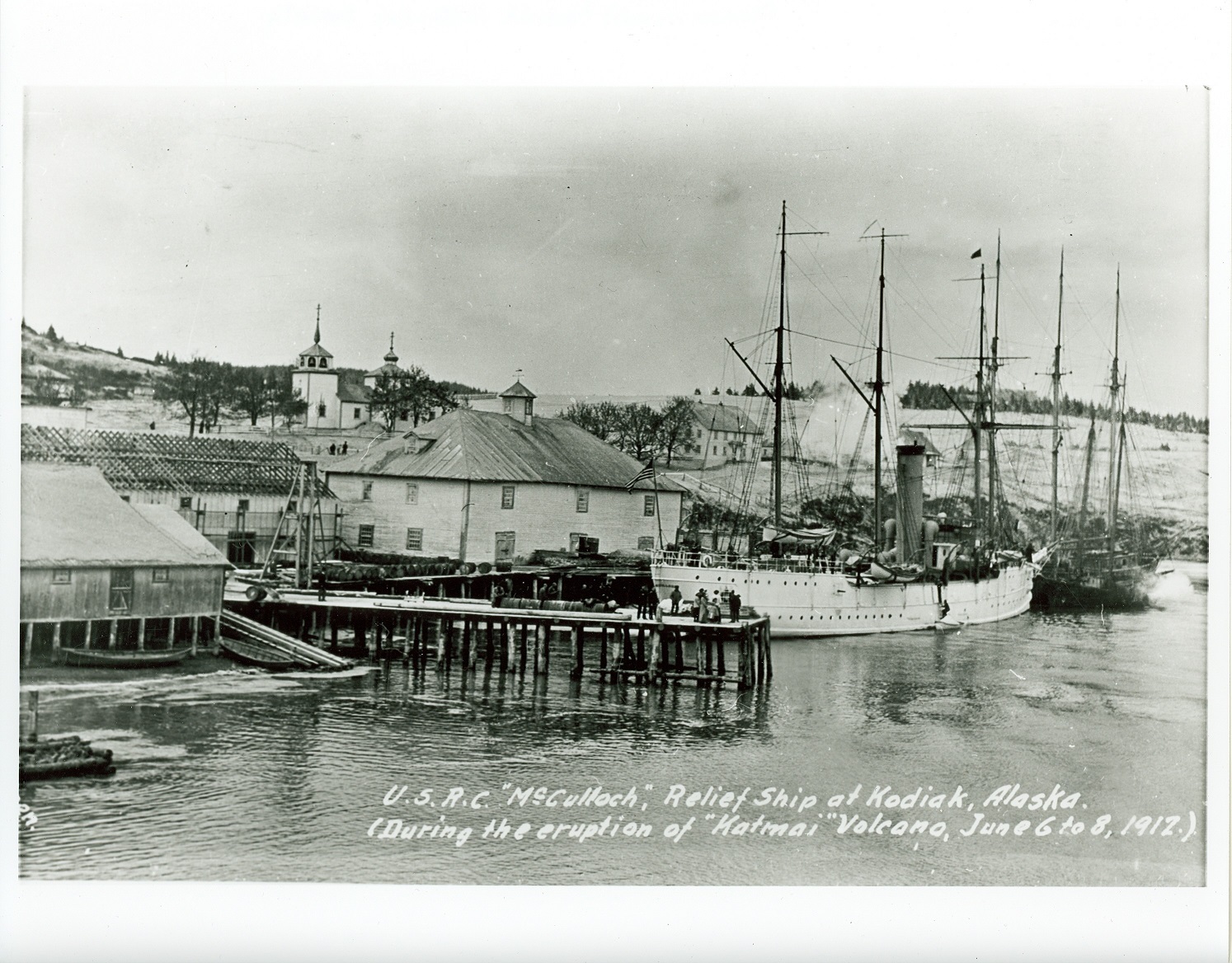 The evening of Saturday, June 8 was a continuation of June 6 and 7, but around midnight the density of the falling ash began to grow thinner and the sulfuric fumes seemed to decrease. Once again the good news was passed below and there was great thankfulness and rejoicing. But all awaited the verdict from the heavens. Steadily, the falling ashes thinned out and the fumes practically disappeared from the air. As the morning of the 9th dawned, the precipitation of ash ceased entirely, the sky cleared, and Woody Island and the crags and hills of the harbor, draped in their whitish shrouds several feet deep, loomed before them. To the men on the deck of the cutter, it looked as if they were on a vessel on the ash-laden crust of the moon. Even the waters of the harbor were coated with the light, floating pumice or volcanic ash of pulverized mountains.
The evening of Saturday, June 8 was a continuation of June 6 and 7, but around midnight the density of the falling ash began to grow thinner and the sulfuric fumes seemed to decrease. Once again the good news was passed below and there was great thankfulness and rejoicing. But all awaited the verdict from the heavens. Steadily, the falling ashes thinned out and the fumes practically disappeared from the air. As the morning of the 9th dawned, the precipitation of ash ceased entirely, the sky cleared, and Woody Island and the crags and hills of the harbor, draped in their whitish shrouds several feet deep, loomed before them. To the men on the deck of the cutter, it looked as if they were on a vessel on the ash-laden crust of the moon. Even the waters of the harbor were coated with the light, floating pumice or volcanic ash of pulverized mountains.
All hands, including the native men aboard, were turned to clearing off the decks of the cutter. The temporary deckhouse was removed and two tents made of sails were erected in the forequarter of the hurricane and quarter decks. Except for the sick and injured, which now numbered so many as to keep the surgeon and shore physician constantly busy, everybody moved out on deck. They welcomed the sun and beheld the strange spectacle of the island of Kodiak completely covered with a whitish yellow ash except where it had slid in avalanches down off bald mountain spots.
At about 10:00 a.m., Capt. Kirkland Perry appointed a committee of officers of the Manning and citizens to go by lifeboat to Kodiak village, examine the situation there and make a report to him. Another group was sent to Woody Island in the motorboat for the same purpose.
At 12:20 p.m., the committee from Kodiak reported that, except for the depth of the ash deposit, the people there were as well as could be expected under the circumstances. Kodiak’s inhabitants might return to their homes as soon as they felt sure the eruption was over.
During the afternoon, Perry sent another party ashore in a surfboat to rescue some workmen who had been working on a ranch four miles below Kodiak. This boat returned later with five people. Next, the coal barge St. James, which had been left at the wharf at St. Paul, was towed out into the harbor and cleared of over 200 tons of volcanic deposit!
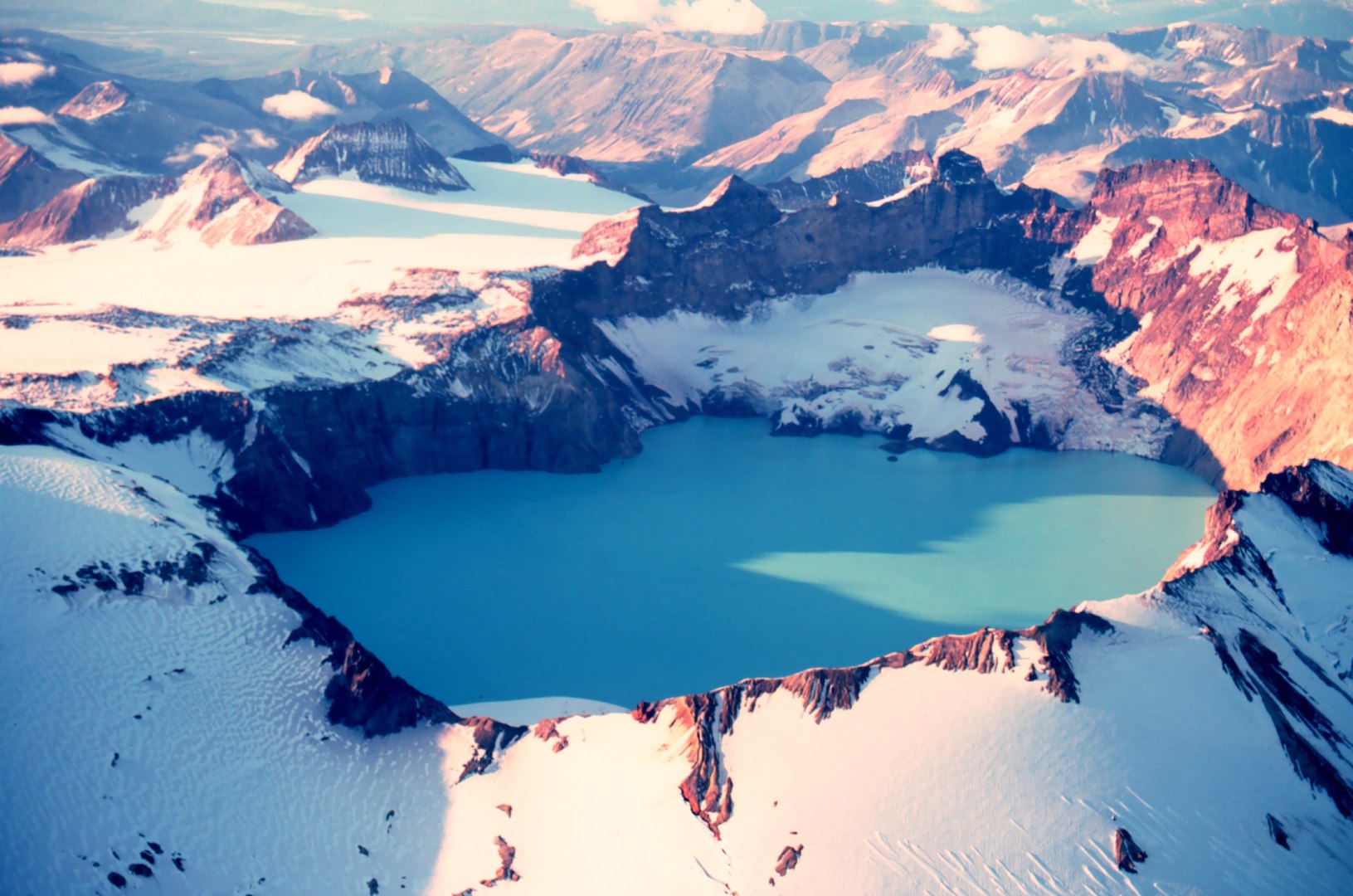 At 3:00 p.m., the motorboat reported that the homes of the people on Woody Island had not been destroyed so the inhabitants were returned to the island.
At 3:00 p.m., the motorboat reported that the homes of the people on Woody Island had not been destroyed so the inhabitants were returned to the island.
The next day, the Manning returned the inhabitants of St. Paul to their homes. Of all the sick people aboard the cutter, only one refugee, a Mrs. Olsen, who was ill with tuberculosis, died aboard the Manning.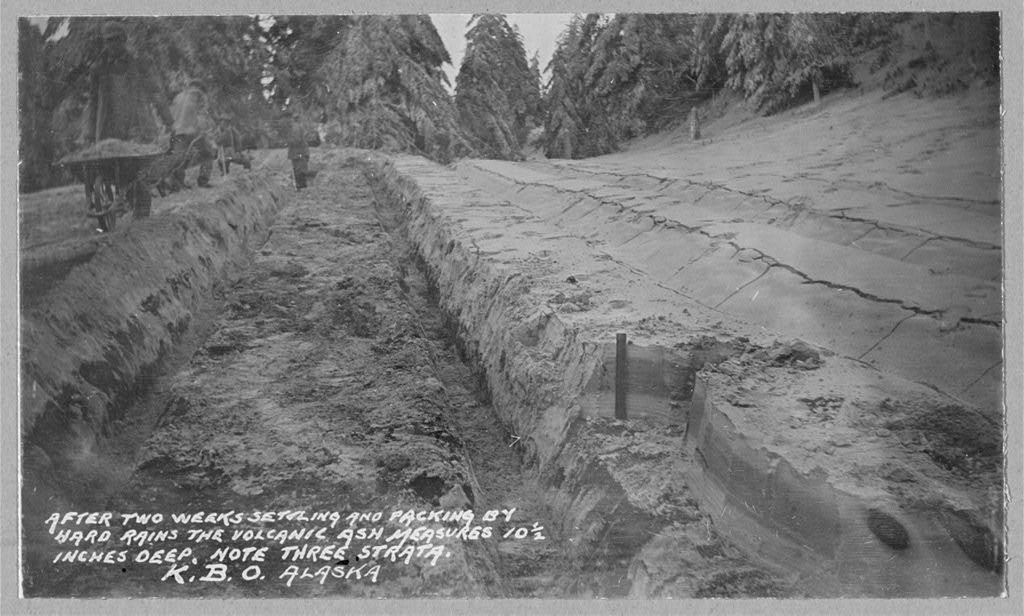
As soon as all the refugees were landed, Perry put Lieutenant Thompson in charge of the Redondo and sent it over to the mainland from whence Captain Perry had seen the first cloud of cinder rising. Perry ordered Thompson to learn where the eruption had taken place and to succor any native villages which might need food, water, or medical attention.
When he returned, Lt. Warner Thompson reported that Mt. Katmai, on the Alaskan Peninsula, which was a short distance inland from the Alaskan Gulf, was completely pulverized by a long series of explosions, and that ashes and pumice covered the whole section round-about from several feet deep in places it had drifted in ravines to a height far up above the treetops.
Fortunately, no native villages were near the eruptions. Those on the seashore had been buried in ashes, but the huts had not been destroyed. All the natives, however, were sorely in need of fresh water, food, and clothing. It was also reported that ash so completely covered one village that Thompson removed the natives to a site where he established another village, which he named “Perry” in honor of the valiant captain of the Manning.
Meanwhile, the skies had not entirely cleared. During June 9, 10, and 11, the skies seemed to indicate that some substance was still held in suspension in the atmosphere. Sometimes the most unpleasant and strangling gases were still observable. Wherever these gases landed on the Manning they turned the white paint on the deck to a dirty gray color.
On June 13, the Redondo and th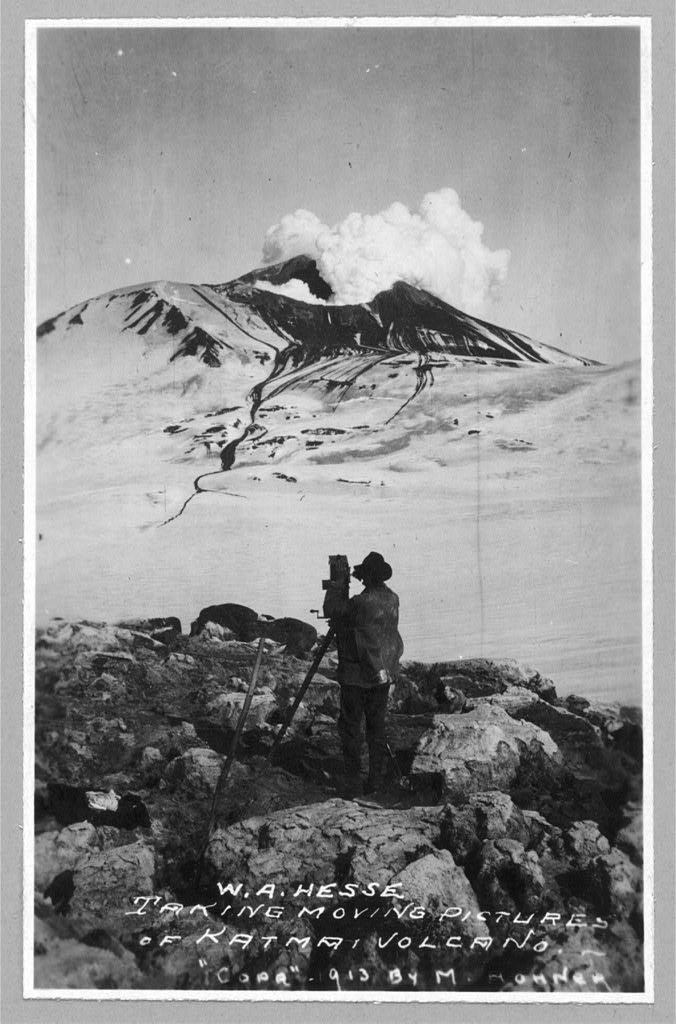 e Norman returned from their missions of mercy scouting along the southern shores of the Alaskan Peninsula for villages or boats in distress, and reported they had found none. Early in the morning, and for the first time the air contained no trace of volcanic matter or gases and Perry now believed the eruptions had ceased.
e Norman returned from their missions of mercy scouting along the southern shores of the Alaskan Peninsula for villages or boats in distress, and reported they had found none. Early in the morning, and for the first time the air contained no trace of volcanic matter or gases and Perry now believed the eruptions had ceased.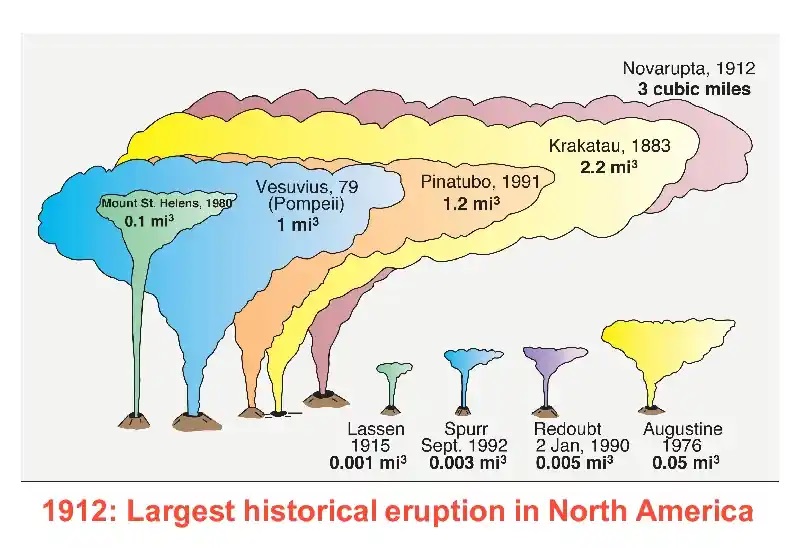
The reports of the officers of the Manning are practically the only written records we have of eyewitnesses of the greatest volcanic catastrophe known to have happened within the territories of the United States.
Lt. William Keester reported to Perry that when he anchored in Katmai Bay near the mouth of the Katmai River, he found pumice stone to the depth of four inches floating on the water a half-mile from the land, and close to the beach it was about 10 inches thick, making rowing through it very difficult. In his two-mile walk inland Keester found that the deposit of dust varied from three to four feet on level land to a depth of 14 feet in the drifts! This dust lay in several distinct strata: fine light gray, light orange, coarse black, and then dark gray. In all this were great pieces of pumice stone of all shapes from two to 10 inches in diameter and weighing as much as four pounds.
Later, it was discovered that the whole territory of the Alaskan Peninsula and the islands in Shelikof Strait were so covered with ashes that the cattle could find very few places to feed even on the hillsides. Down in the valleys the feed was completely covered or impregnated with sand and ashes so that feed and grain had to be transported to the cattle at the villages of St. Paul and Kodiak.
Geologists have stated that the dust from the eruptions of Mt. Katmai on those three June days traveled around the world and accounted for the thin clouds of yellow dust which obscured the sun for many days during June and July all over Canada and the United States. Later, when geologists from the National Geographic Society explored the neighborhood, they found 10,000 fumaroles emitting fire and smoke in the valley. The stupendous crater where the great eruption had occurred is now known as the Valley of Ten Thousand Smokes and is a National Park.
EDITOR’S NOTE:
Amazingly, according to the Alaska Volcanic Observatory (AVO), no one died as a result of the eruption itself. Also according to the AVO, volcanologists discovered in the 1950s that the 1912 “eruption was actually from Novarupta, not Mount Katmai. Novarupta's eruption had removed so much molten rock (magma) from beneath Mount Katmai that it caused a cubic mile of Katmai's summit to collapse."
Read the first part here, and the second part here.